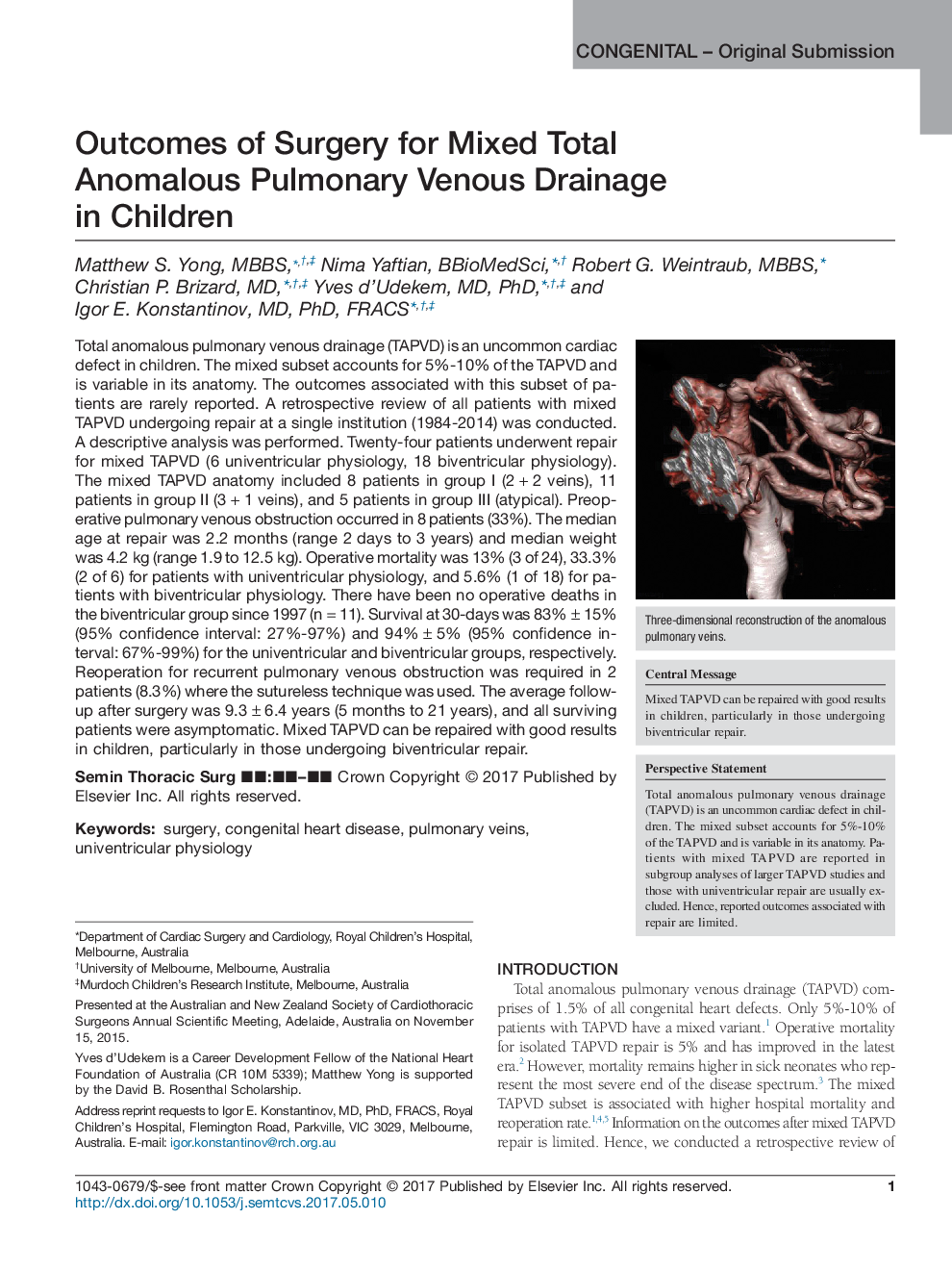| Article ID | Journal | Published Year | Pages | File Type |
|---|---|---|---|---|
| 8679158 | Seminars in Thoracic and Cardiovascular Surgery | 2017 | 7 Pages |
Abstract
Total anomalous pulmonary venous drainage (TAPVD) is an uncommon cardiac defect in children. The mixed subset accounts for 5%-10% of the TAPVD and is variable in its anatomy. The outcomes associated with this subset of patients are rarely reported. A retrospective review of all patients with mixed TAPVD undergoing repair at a single institution (1984-2014) was conducted. A descriptive analysis was performed. Twenty-four patients underwent repair for mixed TAPVD (6 univentricular physiology, 18 biventricular physiology). The mixed TAPVD anatomy included 8 patients in group I (2â+â2 veins), 11 patients in group II (3â+â1 veins), and 5 patients in group III (atypical). Preoperative pulmonary venous obstruction occurred in 8 patients (33%). The median age at repair was 2.2 months (range 2 days to 3 years) and median weight was 4.2âkg (range 1.9 to 12.5âkg). Operative mortality was 13% (3 of 24), 33.3% (2 of 6) for patients with univentricular physiology, and 5.6% (1 of 18) for patients with biventricular physiology. There have been no operative deaths in the biventricular group since 1997 (nâ=â11). Survival at 30-days was 83%â±â15% (95% confidence interval: 27%-97%) and 94%â±â5% (95% confidence interval: 67%-99%) for the univentricular and biventricular groups, respectively. Reoperation for recurrent pulmonary venous obstruction was required in 2 patients (8.3%) where the sutureless technique was used. The average follow-up after surgery was 9.3â±â6.4 years (5 months to 21 years), and all surviving patients were asymptomatic. Mixed TAPVD can be repaired with good results in children, particularly in those undergoing biventricular repair.
Related Topics
Health Sciences
Medicine and Dentistry
Cardiology and Cardiovascular Medicine
Authors
Matthew S. MBBS, Nima BBioMedSci, Robert G. MBBS, Christian P. MD, Yves MD, PhD, Igor E. MD, PhD, FRACS,
